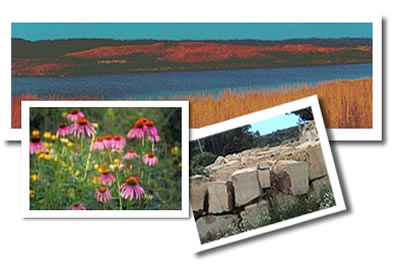Minnesota River Virtual Tour - Kasota
|
|
|||
|
Stop 9 - Kasota (River Mile 100) |
|||
 |
 |
||
 |
|||
|
Near Kasota and again at Ottawa, towering limestone bluffs sweep up the sides of the river. Otherwise, the banks through Le Sueur, Henderson, Blakeley and on toward Belle Plaine are relatively gently sloping and clay covered. We’ve seen few signs of agriculture along the way. Instead, highway traffic noise, trains and the occasional distant hum of lawn mowers signal the more urban areas we’re headed to. |
|||
|
Stone Bluffs In this stretch of the river, you can see ancient dolostone outcroppings that were exposed by the powerful waters of the glacial River Warren. Dolostone is a sedimentary rock very similar to limestone but composed primarily of the mineral dolomite. Mankato-Kasota dolostone is quarried from open pits near the town of Kasota. This very fine-grained yellowish-tan stone (photo, above) is relatively resistant to weathering and is widely used as a building stone. Many Minnesota landmarks are constructed with Kasota stone. The rock was formed 450-500 million years ago when a shallow sea covered most of North America. Burrowing marine organisms, most likely clams or shrimp, that moved through the soft sandy muds produced the mottled texture in these rocks. Geologists classify this sedimentary rock in part of the Oneota Dolostone Formation.
Prairies |
|||
| | map | 1 | 2 | 3 | 4 | 5 | 6 | 7 | 8 | 9 | 10 | 11 | 12 | basin overview | home | |
|
||
